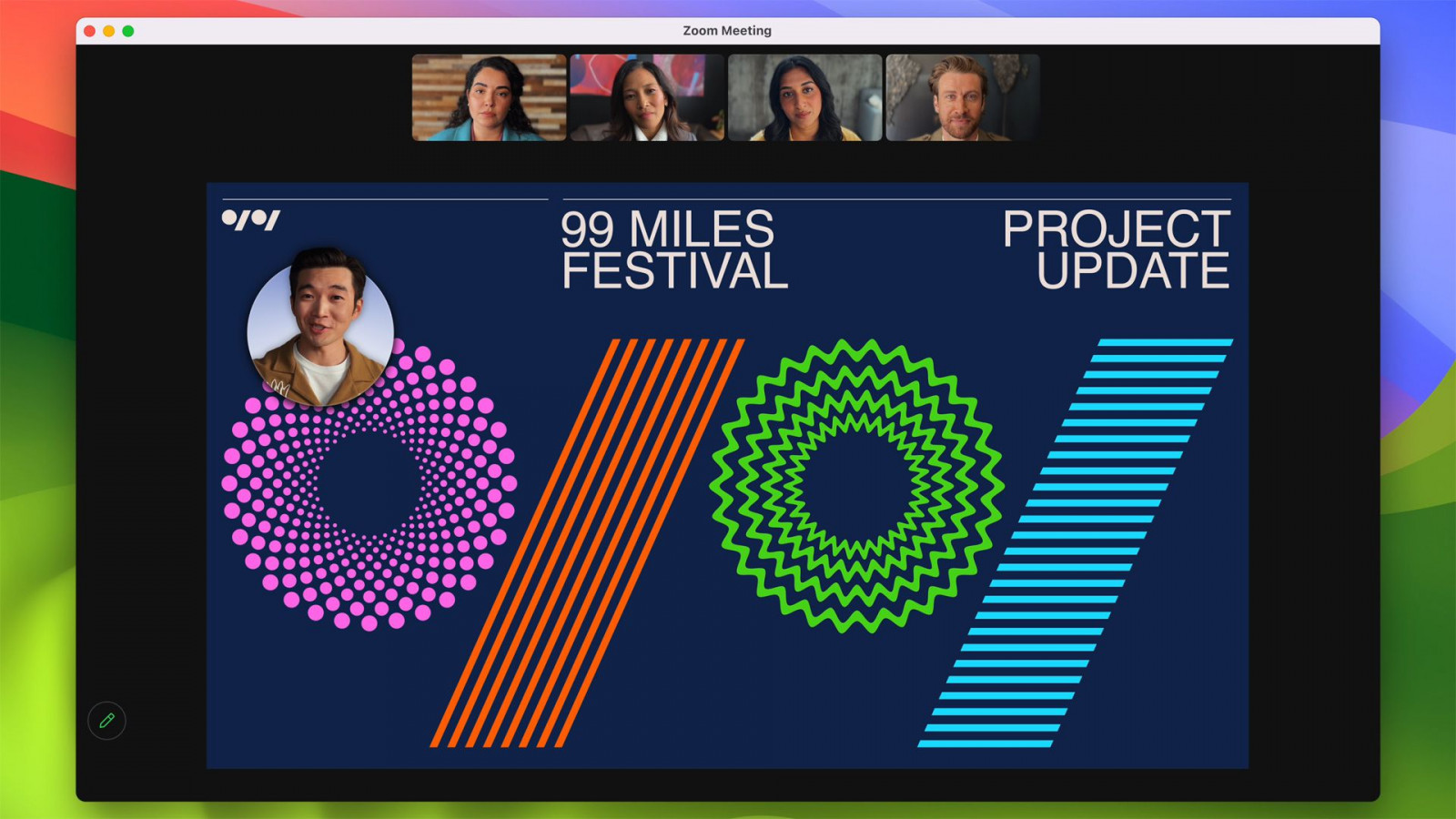Three years ago, making video calls seemed like it would revolutionize the way we work. But all we got was a slightly better video chat.
Video conferencing has become much more important to many with the COVID-19 pandemic. With people suddenly having to use video chat for work, school, or even visiting family, interest has surged in apps and platforms that promise to make the concept of sitting in front of a webcam a little more exciting.
Meta launched Messenger Rooms for 50 people. Video messaging apps Houseparty and Marco Polo exploded. Hopin tried to make the virtual events feel like a face-to-face conference. Mmhmm offered fun options and effects to make video calls not like looking straight into someone’s camera. Snap Camera has become a popular way to add filters to video calls. Even Verizon has invested heavily in video conferencing, buying BlueJeans for nearly $400 million and making vague promises of integrating it with 5G.
…and Zoom sat on the throne
Meanwhile, Zoom has become a popular name almost overnight. The company suddenly began to look like the future of life, business, school and everything.
Even after all that, the video chat experience is perhaps the most boring ever. Many people are now gathering together as before the pandemic began. The market is largely dominated by tech giants, and the pace of new and interesting features has slowed to almost non-existence.
Hopin has transferred its events and webinars business to RingCentral as part of its “strategic relationship” announced earlier this month. Mmhmm it’s still on the market, but we haven’t come across anyone talking about this tool other than tech writers. Houseparty, the group video chat app from the creators of Meerkat, was acquired by Epic Games in 2019 but shut down in 2021. Verizon has announced that it will shut down BlueJeans. Snap even turned off Snap Camera.

Zoom is still very effective. But even with added features like Zoom calls, face effects, avatars and AI summaries, it’s pretty similar to what it was at the start of the pandemic. Zoom is increasingly trying to find an industry beyond video chat, but no one uses team chat or email and calendar services like Slack.
Google Meet and Microsoft Teams
Google Meet has been the most traveled app ever. In April 2020, Google wisely rebranded the app from “Hangouts Meet” to “Google Meet”, separating it from the confusing and dead Hangouts brand. Over time it fixed some obvious missing features and improved the overall stability of the app.
Microsoft continues to invest in video conferencing features for its Teams app and is better positioned to add some fun to video calls by integrating Snapchat’s Lenses. But there is something ironic about Microsoft investing so much in something else for video chat while they already have Skype.
The future doesn’t look so bright
The future of video chat apps is not at all encouraging. Apple has a few interesting ideas that come with macOS Sonoma, some of which are borrowed from others: You can make your face appear in a small animated bubble, make yourself look bigger, put you in focus, and make gestures for animated responses. These will likely be ubiquitous when Sonoma launches, but are animated fireworks really the best thing we can add to video chat?
Discord lets you do things like video call with friends, play games, or watch YouTube videos together. If your workplace uses Slack, we may recommend Slack for short, impromptu chats similar to desk chats while working in the office.
But it really feels like the time to get excited about video chat apps is past. Of course, Zoom, Google Meet and Teams are very good at what they do. It’s great that things like custom backgrounds and emojis become commonplace no matter what app you use. But when we get into a video call, we’re still looking at boxes largely filled with people, and apps often become utilities we’re not excited to use.